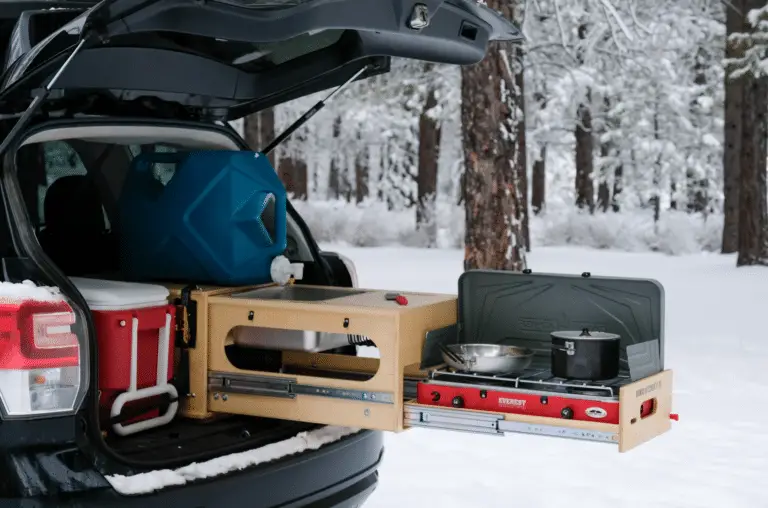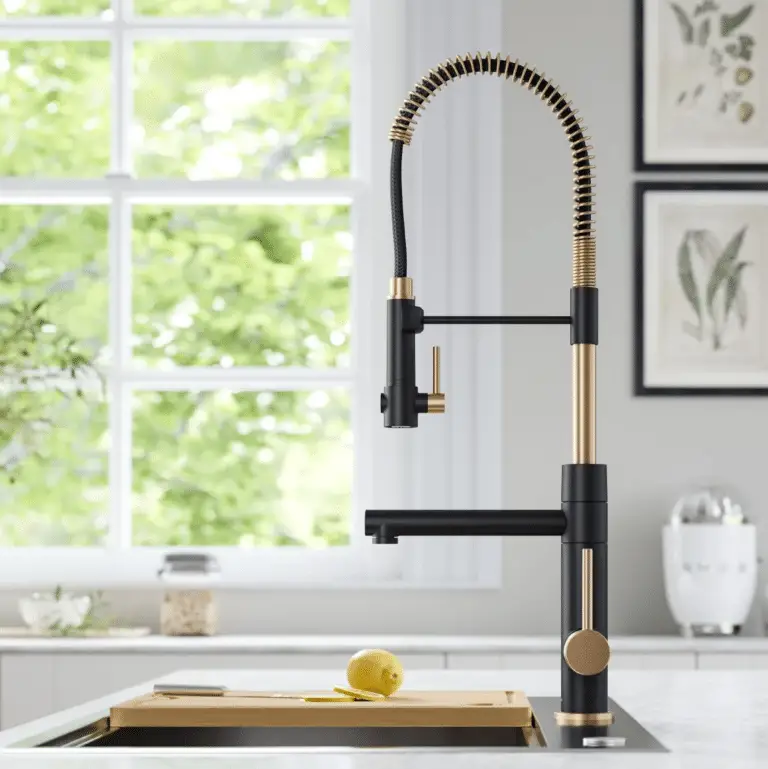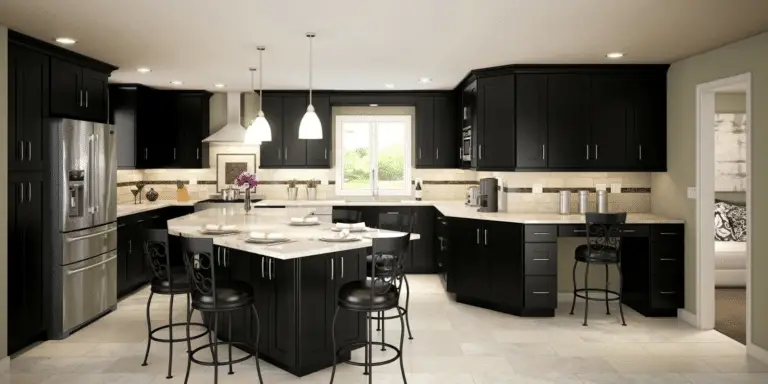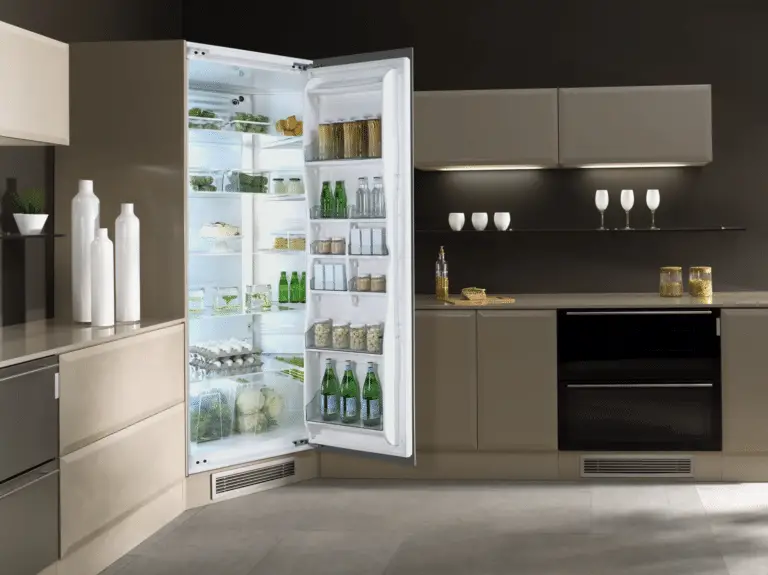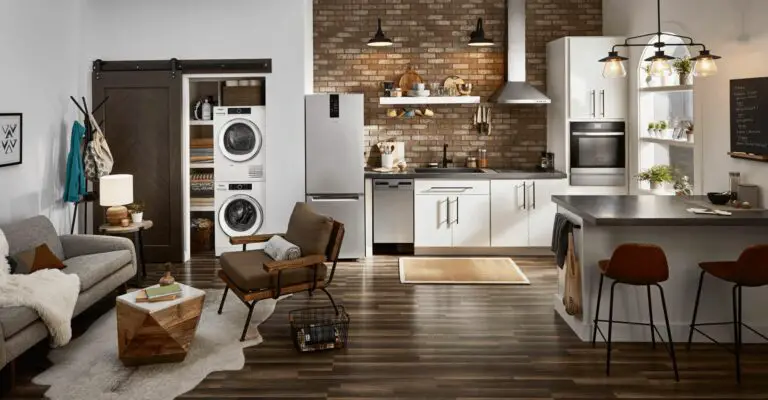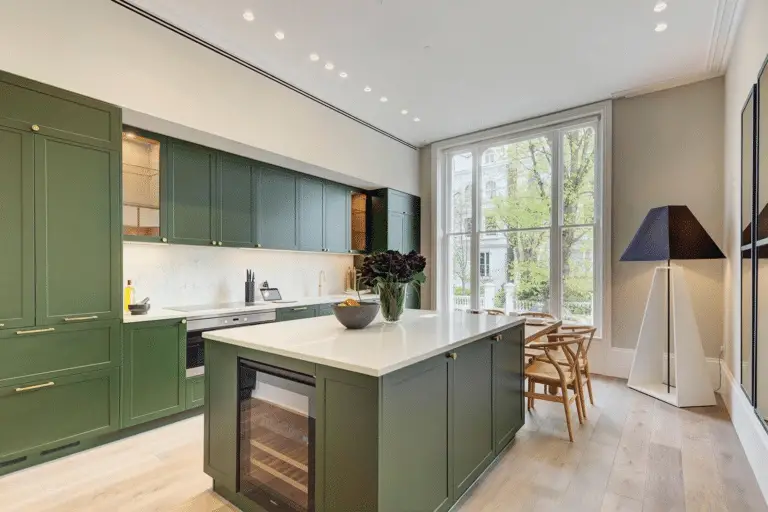Welcome to the world of Kitchen Shiplap! If you’re looking to add charm and character to your kitchen, then shiplap might be the perfect choice for you.
From understanding its uses and appeal to exploring popular design trends, we’ve got you covered. Learn about the cost factors, installation methods, maintenance tips, and pros and cons of using shiplap in your kitchen.
Stay tuned to discover how this classic design element can transform your space!
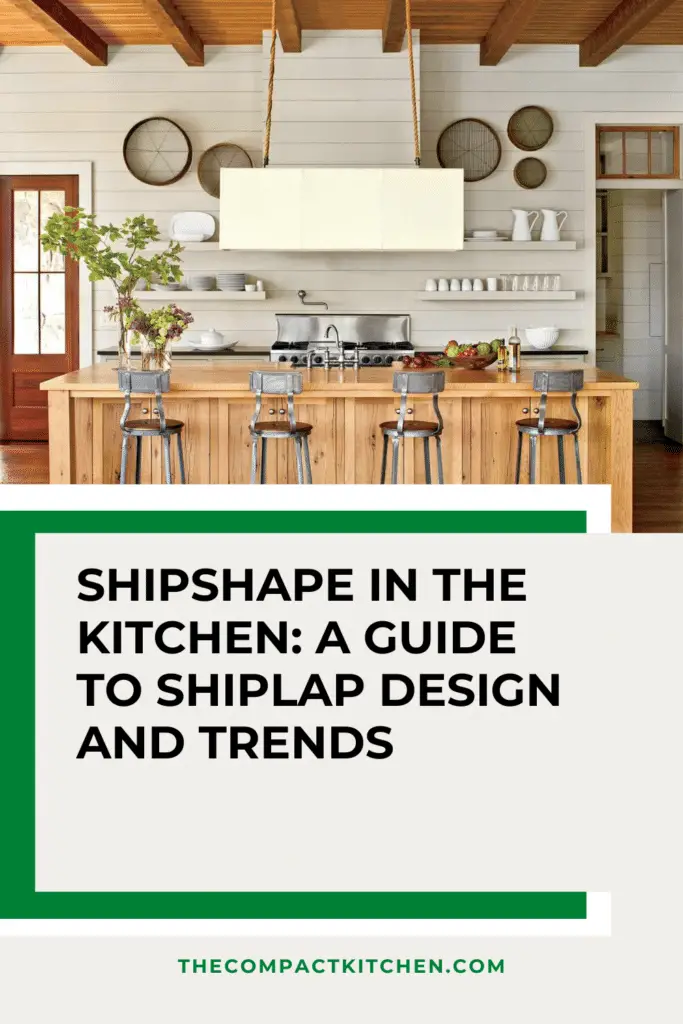
Introduction to Kitchen Shiplap
When it comes to adding charm and character to your kitchen, shiplap is a versatile design element that can instantly transform the look and feel of the space. Derived from the practical use of overlapping wooden boards on the exterior of ships, shiplap has made a smooth transition to interior design, particularly in kitchen spaces. This style of paneling adds a touch of rustic elegance and texture that can elevate the aesthetic appeal of any kitchen.
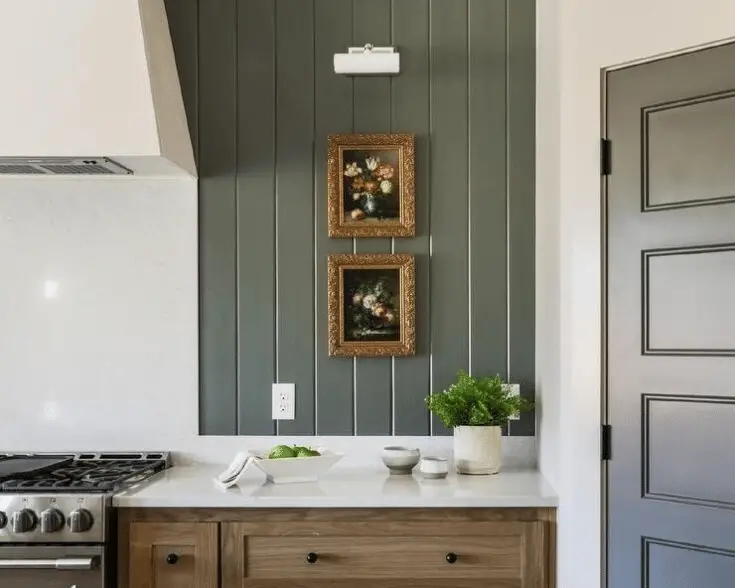
One of the key characteristics of shiplap is its horizontal orientation, with each board fitting snugly into the next, creating clean lines and a seamless appearance. This simple yet impactful design feature can be used in various ways in the kitchen, from creating a focal point on a feature wall to wrapping it around kitchen islands or even using it on ceilings to add depth and visual interest.
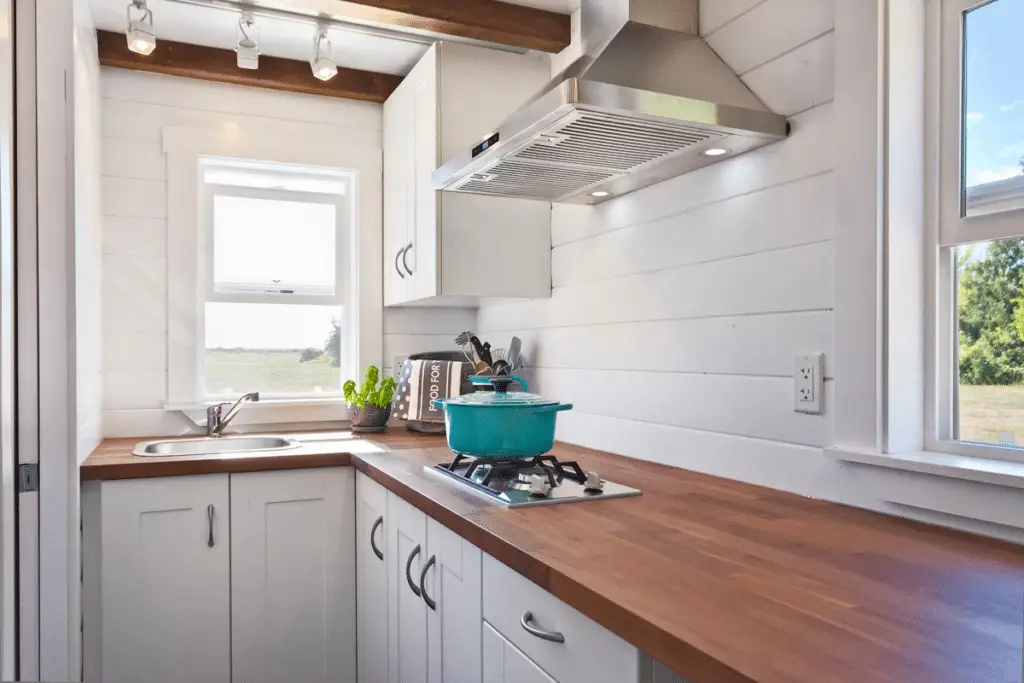
What makes shiplap so appealing in kitchen design is its ability to complement a wide range of styles, from farmhouse and coastal to modern and industrial. Whether you’re aiming for a cozy, cottage-inspired look or a sleek, contemporary vibe, shiplap can be customized to suit your unique aesthetic preferences.
The Cost and Installation of Kitchen Shiplap

When it comes to adding shiplap to your kitchen, understanding the cost and installation process is crucial. Let’s delve into the factors that can affect the cost of kitchen shiplap and explore the various methods of installation.
Factors Affecting Cost
The cost of adding shiplap to your kitchen can vary depending on a few key factors. One of the primary considerations is the type of shiplap material you choose. Traditional wood shiplap tends to be more expensive than alternatives like MDF or PVC shiplap. Additionally, the size of your kitchen and the amount of shiplap needed will impact the overall cost. If you plan to hire professionals for installation, labor costs will also need to be factored in.
Methods of Installation
There are several methods for installing shiplap in your kitchen, each with its own unique process and requirements. One popular method is the tongue and groove installation, where each board has a groove on one side and a tongue on the other, allowing them to fit together seamlessly. This method creates a tight, secure fit that helps prevent gaps between boards.

Another common installation method is the nickel gap technique, which involves leaving a small gap between each board to create a distinct visual effect. This technique can add texture and depth to your kitchen walls, enhancing the overall design aesthetic.
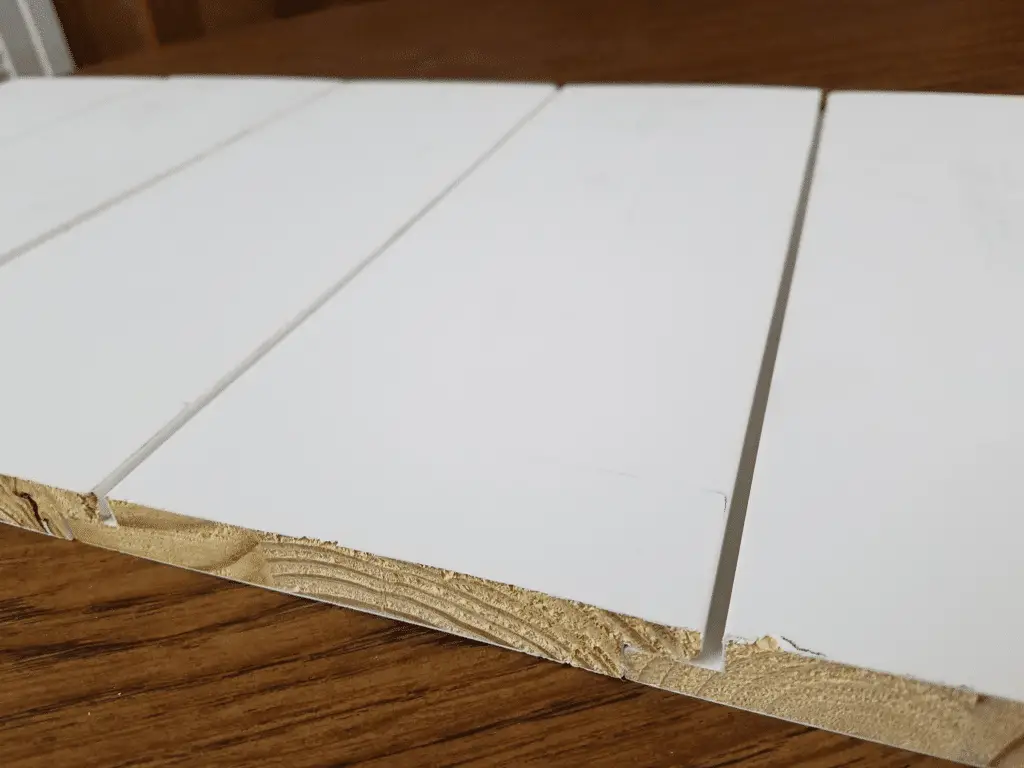
For a more rustic look, some homeowners choose to install shiplap with visible nails, adding a touch of authenticity and character to the space. This method requires precision and attention to detail to ensure a clean and professional finish.
No matter which installation method you choose, proper preparation is key to achieving a successful outcome. Make sure to measure and plan ahead, secure any necessary tools and materials, and follow best practices for cutting and securing the shiplap boards in place.
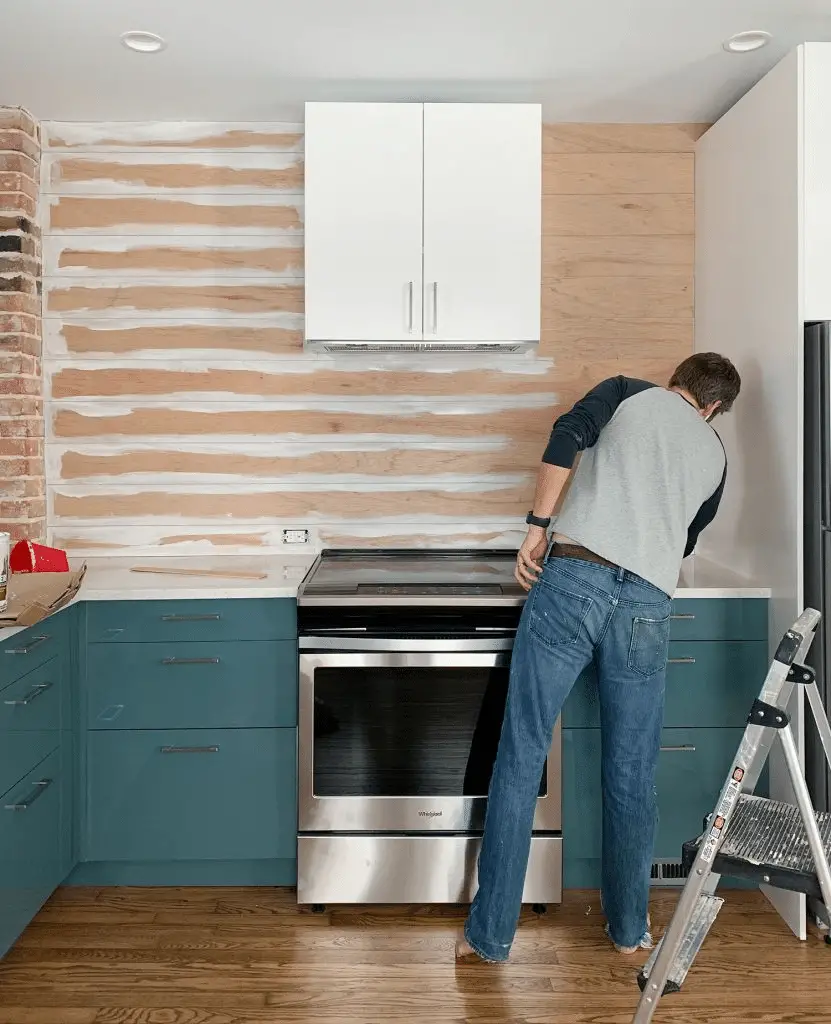
By understanding the cost factors and installation methods associated with kitchen shiplap, you can make informed decisions that align with your budget and design preferences. Whether you opt for a traditional wood shiplap or a modern alternative, the end result is sure to enhance the beauty and charm of your kitchen space.
Popular Kitchen Shiplap Designs and Trends
When it comes to kitchen design, shiplap has become a popular choice for homeowners looking to add a touch of charm and character to their space. The versatility of shiplap allows for a variety of design options, from rustic farmhouse to modern chic. Let’s explore some of the popular kitchen shiplap designs and trends that are making waves in the interior design world.
1. Shiplap Backsplash
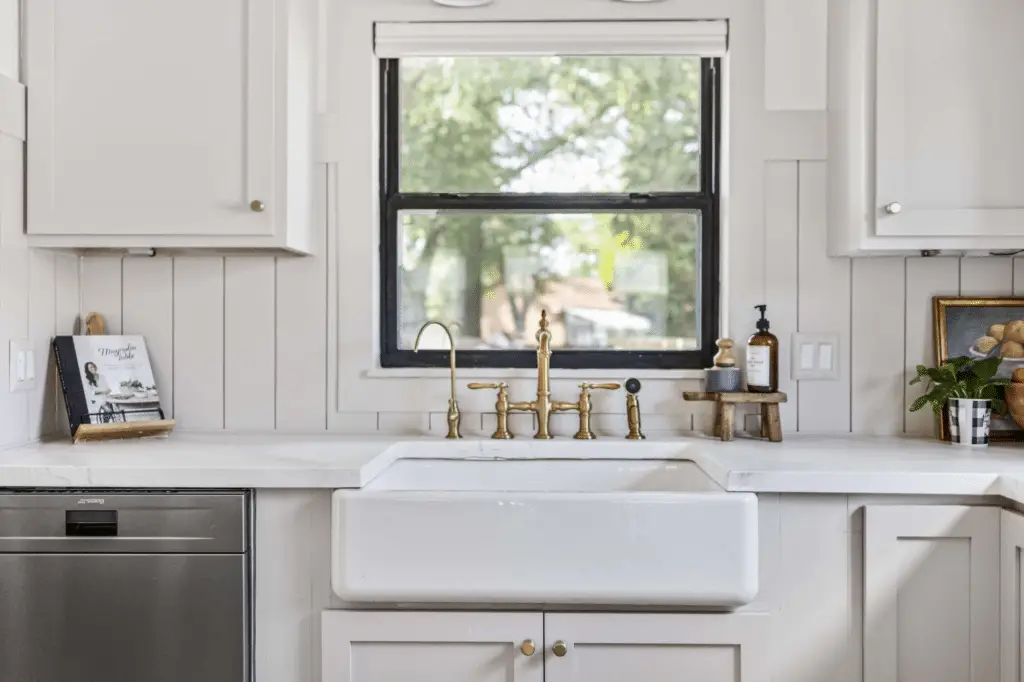
One of the most common ways to incorporate shiplap into the kitchen is by using it as a backsplash. This design choice adds texture and visual interest to the space while providing a durable and easy-to-clean surface. Shiplap backsplashes can be painted in a variety of colors to complement the overall aesthetic of the kitchen, making it a versatile option for any style.
2. Shiplap Ceiling

For a truly unique look, consider adding shiplap to the ceiling of your kitchen. This design choice can make the space feel larger and more open, while also adding a cozy and inviting feel. Whether you opt for a natural wood finish or a painted shiplap ceiling, this design trend is sure to make a statement in your kitchen.
3. Accent Walls
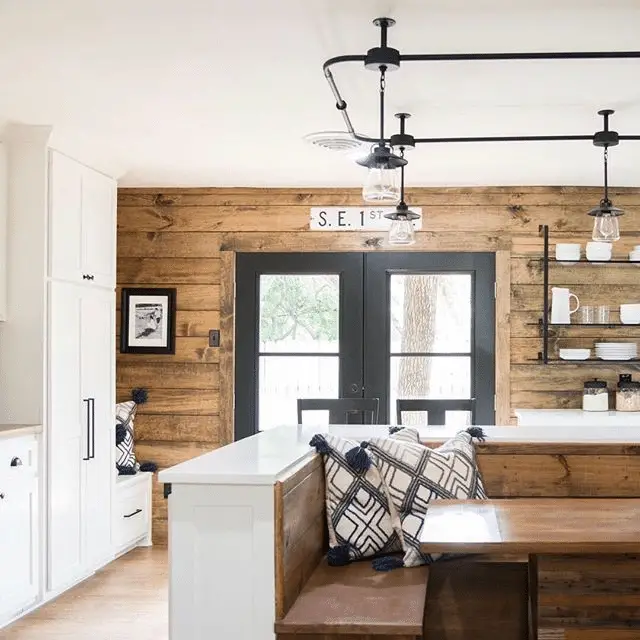
Another popular trend in kitchen shiplap design is using it to create an accent wall. Whether you choose to cover an entire wall or just a portion of it, shiplap adds depth and texture to the space. This design choice works well in both modern and traditional kitchens, providing a focal point that draws the eye and adds visual interest.
4. Integrated Shiplap
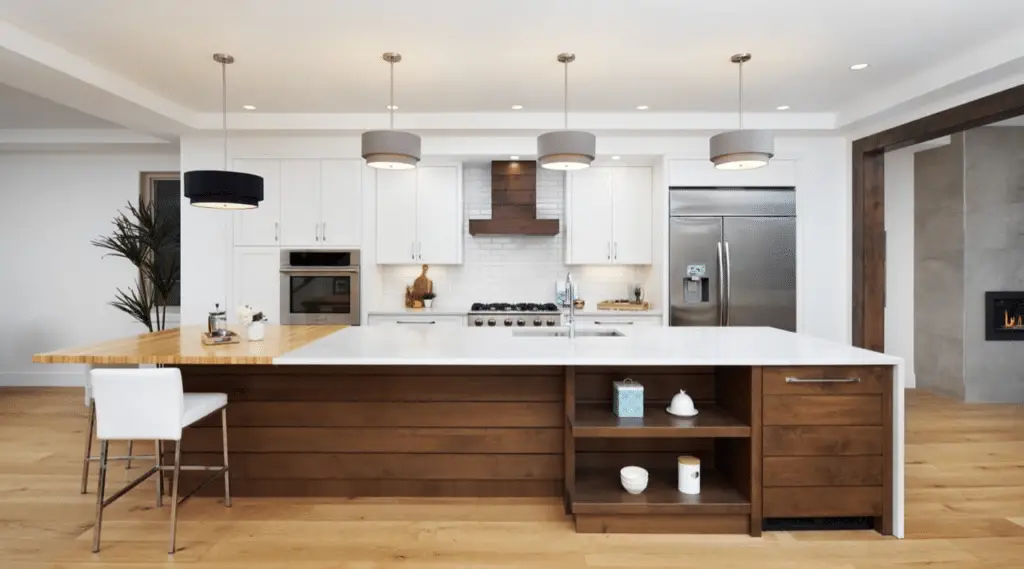
For a more subtle approach to shiplap design, consider integrating it into your kitchen cabinetry or island. By adding shiplap details to these elements, you can create a cohesive and cohesive look that ties the entire room together. Whether you choose to paint the shiplap to match the cabinetry or leave it in its natural state, this design choice adds a touch of charm and sophistication to the space.
In conclusion, kitchen shiplap design offers a wide range of options for homeowners looking to add a touch of character and charm to their space. Whether you opt for a shiplap backsplash, ceiling, accent wall, or integrated details, this versatile design element is sure to make a statement in your kitchen. Explore the various trends and design ideas to find the perfect shiplap style for your home.
How to Maintain and Clean Kitchen Shiplap for Longevity
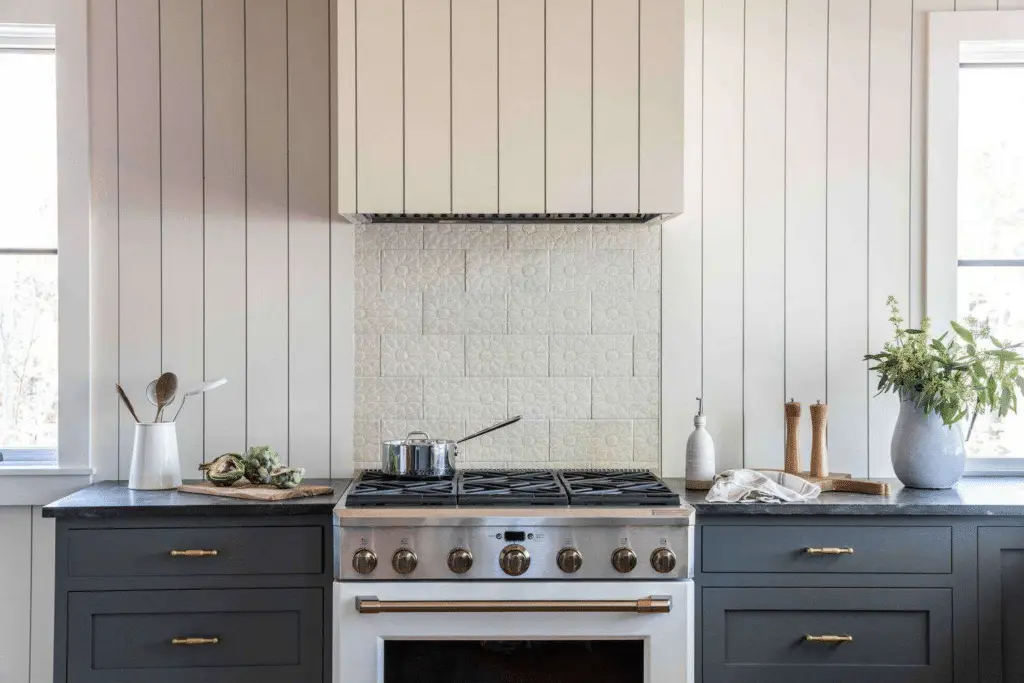
When it comes to incorporating shiplap into your kitchen design, maintaining and cleaning this trendy material is essential for ensuring its longevity and keeping it looking its best. Here are some techniques and tips to help you take care of your kitchen shiplap:
1. Regular Dusting and Cleaning
One of the simplest ways to maintain your kitchen shiplap is by regularly dusting and cleaning it. Dust and dirt can accumulate on the surface over time, dulling its appearance. Using a dry microfiber cloth or a soft brush, gently dust off the shiplap to keep it looking fresh. For deeper cleaning, you can use a mild soap solution and a soft sponge to wipe down the surface. Be sure to dry the shiplap thoroughly to prevent any moisture damage.
2. Avoid Harsh Chemicals
When cleaning your kitchen shiplap, it’s important to avoid harsh chemicals or abrasive cleaners that can damage the wood or finish. Stick to gentle cleaning solutions, such as a mixture of water and vinegar or a mild dish soap, to prevent any potential harm to the shiplap surface. Always test a small, inconspicuous area before applying any cleaning solution to the entire shiplap wall to ensure compatibility.
3. Prevent Water Damage
Given that the kitchen is a high-traffic area where water and spills are common, it’s crucial to protect your shiplap from water damage. Wipe up spills immediately to prevent them from seeping into the wood and causing stains or warping. Additionally, consider installing a protective sealant or topcoat on your shiplap to create a barrier against moisture and enhance its durability.
4. Inspect and Repair as Needed
Regularly inspect your kitchen shiplap for any signs of wear, damage, or discoloration. Address any issues promptly by repairing or refinishing the affected areas to prevent further deterioration. Whether it’s a scratch, dent, or fading paint, taking care of minor imperfections early on can help preserve the overall look and integrity of your shiplap.
5. Maintain Proper Climate Conditions
Wood is sensitive to changes in temperature and humidity, so it’s essential to maintain proper climate conditions in your kitchen to prevent any damage to your shiplap. Avoid placing shiplap near heat sources, like stoves or radiators, which can cause the wood to expand and contract. Use a dehumidifier to control moisture levels and ensure a stable environment for your shiplap walls.
By following these maintenance and cleaning tips, you can keep your kitchen shiplap looking beautiful and in top condition for years to come. Taking care of this trendy design element will not only preserve its aesthetic appeal but also enhance the overall longevity of your kitchen space.
Pros and Cons of Using Shiplap in the Kitchen

When it comes to incorporating shiplap into your kitchen design, there are certainly some pros and cons to consider. Let’s take a closer look at the advantages and potential drawbacks of using this popular trend in your kitchen space.
Pros of Using Shiplap in the Kitchen
One of the key benefits of incorporating shiplap into your kitchen design is the aesthetic appeal it brings to the space. Shiplap adds a rustic and charming look to the kitchen, creating a warm and inviting atmosphere for both family and guests. The natural texture and pattern of shiplap can also add depth and interest to an otherwise plain wall, making it a versatile option for design.
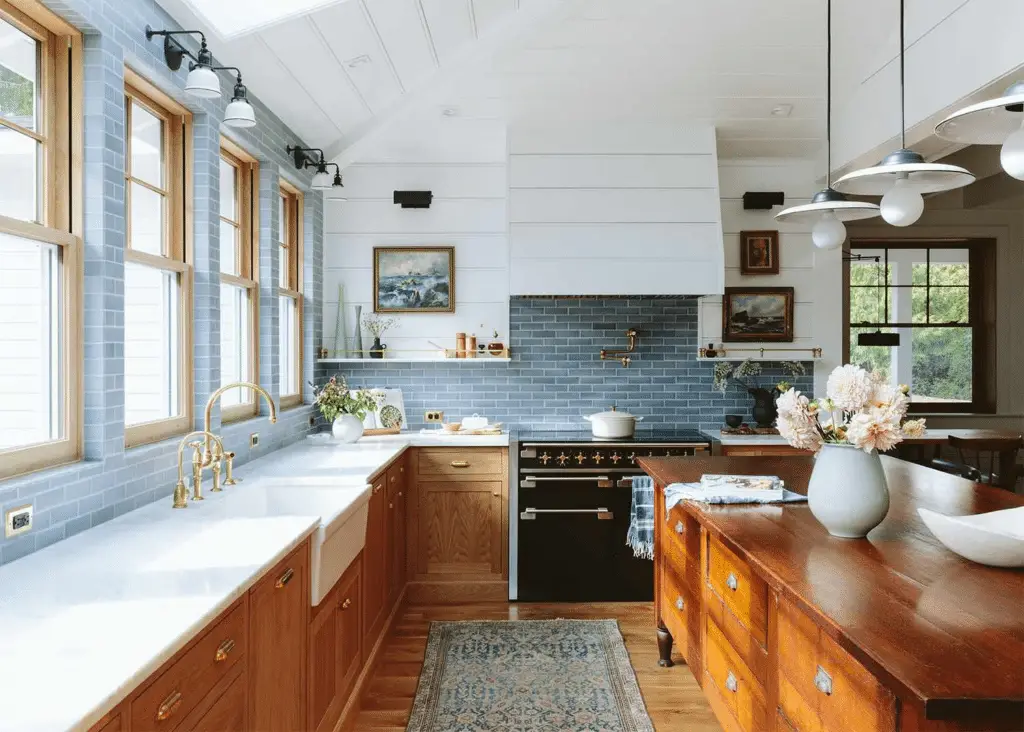
Additionally, shiplap is relatively easy to install, especially compared to other wall treatments. With its interlocking design, shiplap panels can be quickly and efficiently installed, making it a popular choice for DIY enthusiasts looking to update their kitchen space without professional help. This can also result in cost savings for those on a budget.
Another advantage of using shiplap in the kitchen is its durability. When properly maintained, shiplap can withstand the wear and tear of a busy kitchen environment, making it a long-lasting option for your home. Regular cleaning and maintenance can help preserve the integrity of the shiplap panels, ensuring that they continue to look great for years to come.
Cons of Using Shiplap in the Kitchen
While there are many benefits to using shiplap in the kitchen, there are also some potential drawbacks to consider. One of the main concerns with shiplap is its susceptibility to moisture and humidity, which can lead to warping or damage over time. In a kitchen environment where steam and splashes are common, proper ventilation and waterproofing measures may be necessary to prevent these issues.
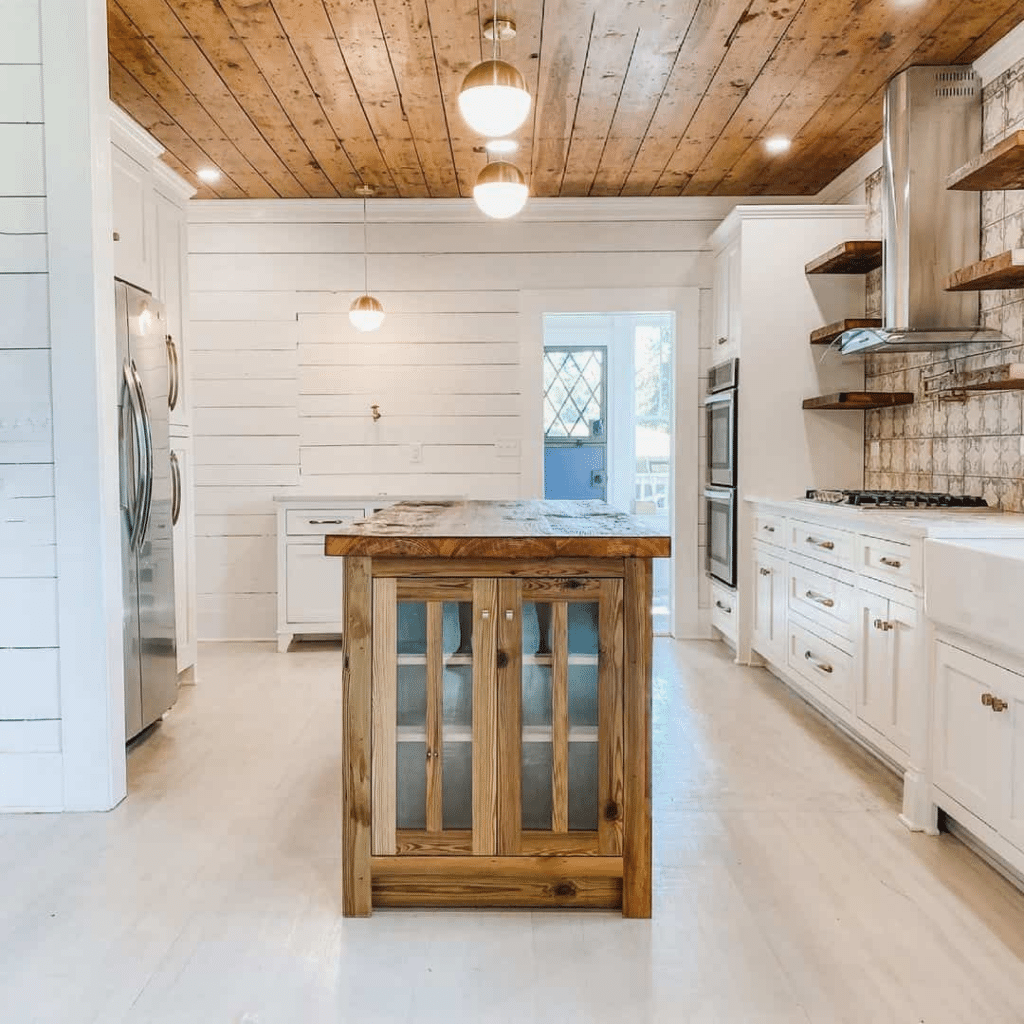
Another drawback of using shiplap in the kitchen is the potential for dirt and grime to accumulate in the grooves between the panels. Without regular cleaning and maintenance, shiplap can become a breeding ground for bacteria and mold, compromising the cleanliness and hygiene of your kitchen space.
Additionally, the cost of installing shiplap in the kitchen can vary depending on the quality of materials and the complexity of the installation process. While shiplap is generally considered a budget-friendly option, factors such as labor costs and customization can impact the overall expense. It’s important to carefully consider your budget and design preferences before committing to using shiplap in your kitchen.
In conclusion, while there are certainly advantages to using shiplap in the kitchen, it’s essential to weigh the pros and cons before making a decision. By understanding the benefits and potential drawbacks of this popular design trend, you can make an informed choice that suits your budget, style, and lifestyle needs.
Set Sail on Your Kitchen Renovation Adventure with Shiplap!
Whether you’re considering a complete kitchen overhaul or just a subtle refresh, incorporating shiplap can transform your space. From budgeting and installation to maintenance tips and design trends, kitchen shiplap offers a world of possibilities. Embrace the charm and character of this timeless design element, but don’t forget to weigh the pros and cons.
So, ahoy matey! Explore the seas of kitchen shiplap and set sail towards a beautifully revamped kitchen! ⚓🏡 #kitchenshiplap #design #renovation



